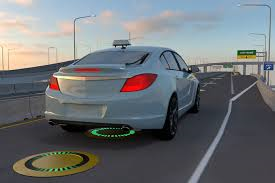AeroMobil, The Future of Mobility: Exploring the Potential of Flying Cars and a Look at the Latest Prototypes In recent years, the concept of flying cars has captured the imaginations of people around the world. Once confined to the realm of science fiction flying cars are now becoming a reality thanks to advances technology and innovation. In this blog post, we will explore the potential of flying cars and take a closer look at some of the prototypes that are pushing the boundaries of transportation.
The idea of flying cars has been around for decades, visions of sleek, futuristic vehicles soaring through the skies captivating both designers and dreamers alike. While the concept may have seemed far-fetched in the past, recent advancements in aviation, autonomous technology, and electric propulsion have made flying cars a viable possibility for the near future. One of the key benefits of flying cars is their potential to revolutionize the way we travel. With the ability to bypass traffic congestion and fly directly to our destinations, flying cars have the potential to dramatically reduce travel times and improve overall efficiency.
READ ALSO: DIESEL ENGINE : DEFINITION, COMPONENTS, FAULTS AND MANUFACTURERS 1

This could have a significant impact on urban mobility, allowing people to travel faster and more conveniently while reducing their carbon footprint. In addition to their practical advantages, flying cars also hold the promise of opening up new possibilities for transportation and exploration. Imagine being able to take off from your driveway and fly to a remote mountain lodge for a weekend getaway, or to access hard-to-reach areas for search and rescue missions. Flying cars have the potential to transform the way we think about travel and unlock new opportunities for personal and commercial use.
AeroMobil
Several companies and startups are currently working on developing flying cars, with prototypes ranging from futuristic concepts to functional aircraft that are already taking to the skies. One of the most notable examples is the PAL-V Liberty, a sleek, gyrocopter-like vehicle that combines the features of a car and a helicopter. With a top speed of 160 km/h in the air and 160 km/h on the ground, the PAL-V Liberty is designed to be both practical and efficient for everyday use. Another promising prototype is the AeroMobil, a hybrid car and aircraft that can take off and land on any grass or paved surface.

The AeroMobil features a range of over 700 km in the air and 600 km on the ground, making it a versatile option for both short trips and longer journeys. With its sleek design and cutting-edge technology, the AeroMobil is a prime example of the potential of flying cars to revolutionize personal transportation. Aside from these examples, numerous other companies are also working on flying car prototypes, each with their own unique designs and features.
From vertical takeoff and landing (VTOL) vehicles to electric-powered drones, the field of flying cars is quickly evolving, with new innovations and breakthroughs being made on a regular basis. Of course, the development of flying cars is not without its challenges. Safety, regulatory approval, and infrastructure are just a few of the hurdles that must be overcome before flying cars can become a mainstream mode of transportation. However, with continued advancements in technology and a growing interest in sustainable and efficient transportation solutions, flying cars are steadily moving closer to becoming a reality.
RAED ALSO: HISTORY OF ELECTRIC VEHICLES { E.Vs }
The potential of flying cars is vast, offering a glimpse into a future where personal transportation is faster, more efficient, and more accessible than ever before. While there are still hurdles to overcome, the progress being made in the field of flying cars is nothing short of remarkable. As we continue to push the boundaries of innovation and technology, flying cars may soon become a common sight in the skies, changing the way we think about travel and opening up new possibilities for exploration and mobility.












